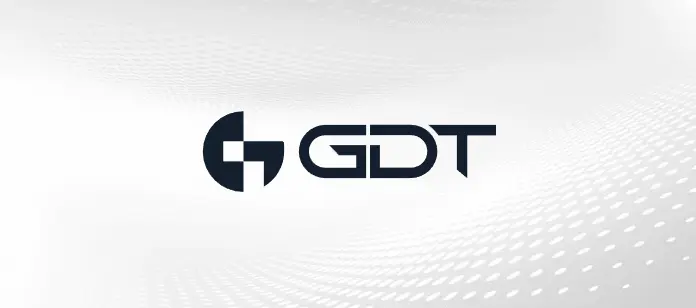As businesses look to boost productivity, many are turning to Microsoft Copilot. This AI-powered productivity capability is embedded into Microsoft 365 applications like Word, Excel, and PowerPoint, tools most employees already know. This familiarity promises a more friction-free experience from an employee onboarding perspective. When implemented successfully, it can automate tasks like summarizing meeting notes and drafting emails, saving substantial time for employees. But like many AI-powered tools, safe adoption is easier said than done — a topic I explored in my recent article, Microsoft Copilot security: Is your data ready?
The main adoption hurdles that organizations face primarily stem from Copilot data governance, which involves aligning people, processes, and technology effectively. In summary, barriers include:
- Shadow AI and plugin sprawl
- Poor data classification and governance
- Unmanaged agent proliferation
- Lack of incident response playbooks
- Zero-click autonomous attacks
Organizations that address Microsoft Copilot data governance are much more likely to move beyond the pilot phase and experience fewer Copilot data security issues once implemented. Below, I’ve outlined a high-level roadmap that your organization can follow for a secure, successful implementation.
Phase 1: Awareness and education
- Appoint an ongoing AI committee that meets regularly to oversee operations, drive improvements, and communicate outcomes to executive sponsors.
- Develop comprehensive AI and Microsoft Copilot training content tailored for both end-users and administrators.
- Issue official communication from IT and executive leadership that clearly explains Microsoft Copilot’s strategic role, risk appetite level, and oversight expectations.
- Appoint AI champions in each business unit to act as liaisons between end users and IT/security during rollout.
- Publish an official AI strategy communication to all employees, defining the role of AI and Microsoft Copilot in digital transformation and organizational risk tolerance.
- Develop an FAQ and “who to contact for AI and Microsoft Copilot issues” resource, ensuring employees know how to report suspicious behavior or get their questions answered.
Phase 2: Base data inventory and classification
- Leverage automated (or semi-automated) discovery tools to scan Microsoft 365 and legacy file repositories.
- Tag and classify data. Apply sensitivity labels, retention declarations, and sharing restrictions as required by business policy and regulatory context.
- Review and document all current plugins, connectors, flows, and agents that interact with organizational data or could be accessed via Microsoft Copilot.
- Identify risky legacy documents/systems (e.g., “open shares,” unclassified personally identifiable information, and obsolete service accounts) and develop a remediation plan.
- Create a central catalog of authorized data sources, plugins, and agents; update access documentation and asset ownership records accordingly.
Phase 3: Policy and process development
- Draft and ratify formal policies for:
- Who can request, approve, and integrate new plugins or agents.
- Mandatory agent/plugin deprovisioning requirements and timelines.
- Data handling, prompt restrictions, and escalation when sensitive data is implicated in AI usage.
- Automated and manual review processes for plugin/agent behavior and user prompt histories.
- Map and document all AI-related workflows from request to approval, integration, monitoring, incident escalation, and retirement.
- Implement an auditable approval process using ticketing or workflow management tools; require risk/security review before any plugin or agent is activated.
- Design decommissioning runbooks for removing outdated agents, plugins, or data sources cleanly.
- Conduct at least one tabletop exercise simulating an AI security incident. Validate incident containment, communication, and recovery steps and revise playbooks as necessary.
- Publish all policies and workflows to a centralized, easily accessible portal or knowledge base.
Phase 4: Pilot deployment and monitoring
- Deploy Microsoft Copilot to a carefully selected group (pilot team) with representation from multiple business units and risk domains.
- Set up granular activity logging and monitoring for all pilot users, plugins, and agents.
- Monitor for unauthorized plugin connections, prompt misuse, and data leakage via DLP policies and behavioral analytics.
- Schedule weekly huddles with the pilot cohort to collect issues, feedback, and improvement opportunities.
- Establish clear “go/no-go” criteria (e.g., no critical policy violations or incidents) for moving beyond the pilot phase.
- Iteratively tune access controls, prompt filtering, and plugin oversight based on live pilot findings.
Phase 5: Scale and continuous improvement
- Develop and execute a phased rollout plan for broader departments, incorporating pilot feedback and tuning governance controls as adoption grows.
- Monitor compliance with governance policies via regular audits of plugin/agent use, data classification accuracy, and incident response metrics.
- Implement automated governance reporting (monthly/quarterly dashboards). Metrics include the number of plugin/agent approvals, policy exceptions, incident response times, and user-reported concerns.
- Review and update classification, data loss prevention, and workflow rules as regulatory, business, and threat landscapes evolve; review for “governance drift” quarterly.
- Engage in continuous user education: roll out microlearning, refresher sessions, and updated FAQs as new Microsoft Copilot features or risks emerge.
- Conduct periodic (biannual/annual) risk assessments, red team exercises, and executive tabletop scenarios to validate security posture and governance effectiveness.
- Solicit ongoing feedback from champions, business users, and risk owners; embed their input into the Microsoft Copilot program roadmap.
- Stay abreast of advances in data security and identity controls and integrate new capabilities and best practices into your lifecycle.
By making each step explicit, assigning accountability, and establishing clear feedback and monitoring loops, this roadmap can help you move your Microsoft Copilot rollout from a risk-prone pilot to secure, value-driven global adoption. When you start with a solid foundation for data governance and build with security in mind, you can deploy with greater confidence and limit risk to your organization.
If you’re interested in exploring your readiness to deploy Microsoft Copilot data governance, we do offer a complimentary workshop. This collaborative engagement with GDT cybersecurity experts is designed to explore your needs, objectives, and vision for your Copilot deployment as well as current governance, maturity gaps, and steps to elevate data governance across your organization. You can learn more by downloading this datasheet .



